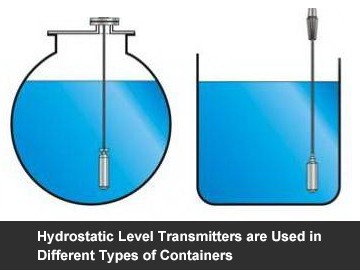Hydrostatic Level Transmitters are Used in Different Types of Containers
In the application of continuous level measurement, hydrostatic level transmitter is the most important sensor. Although there are many kinds of technology for industrial level measurement, hydrostatic level measurement technology has always been far ahead of ultrasonic and radar technology. Therefore, almost one of every two measurement points USES the hydrostatic level transmitter to measure the level, including the static pressure level measurement of different gas-tight containers.
Hydrostatic level transmitters are used in open non-airtight containers
When the hydrostatic level transmitter is used to measure the static pressure level in an open or non-gas-tight basin or container, continuous pressure compensation is required for the atmosphere above the liquid. The atmospheric pressure acting on the medium is an additional "force" that ACTS just as atmospheric pressure ACTS on the whole system (including the level sensors). If a pressure level sensor with a relative pressure measuring unit is used, which is connected to the atmosphere, it can "automatically" compensate for the atmospheric pressure effect in the level measurement. This means that using a relative pressure level sensor in an open container can completely "eliminate" the effect of atmospheric pressure on liquids during level measurement.
Hydrostatic level transmitters are used in sealed airtight containers
If hydrostatic level transmitter is used to measure the level in a sealed airtight container, the measurement needs to compensate for the closed gas phase above the liquid. The closed gas-phase pressure exerts an additional force on the liquid and distorts the static pressure measurement at the bottom of the vessel. Therefore, we must compensate for this distortion effect by additional gas-phase pressure measurements. Gas pressure measurements are often made using a pressure level sensor, an application often referred to as differential pressure measurements.However, there is a deviation between two separate pressure measurements, so we can use two separate sensors or an integrated differential pressure sensor to calculate the pressure deviation. At this point, we can use either the relative pressure (sensor with atmospheric compensation) or the absolute pressure sensor.
Through the analysis of the hydrostatic level transmitter used in the measurement of different pressure, the static pressure measurement technology is indeed a very important measurement technology at present, so the choice of high quality hydrostatic level transmitter suppression is equally important.






